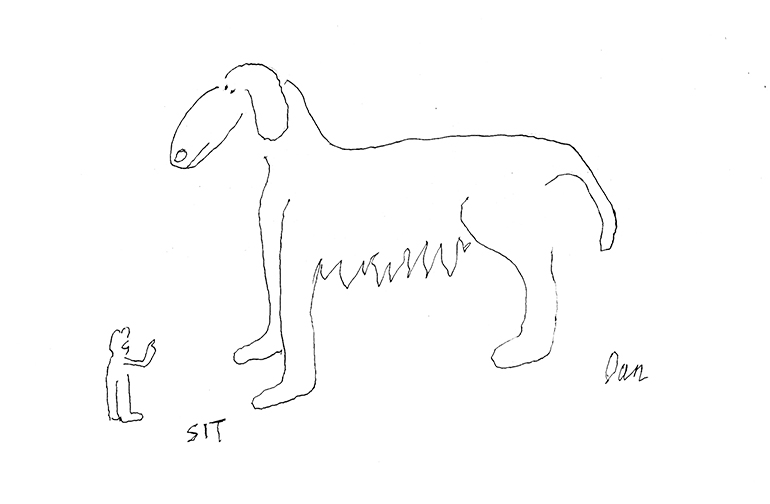Quarantine Lifting: Easing the Trauma Your Dog Might Encounter

There was a wonderful article in The New York Times the other day about dogs and how we
can help them cope with the end of the deep quarantine.
Advice was given by Patricia McConnell, a certified animal behavior expert and the author of the new book At the Other End of the Leash.
Consider, she says, that your dog has had you and the rest of the family in the house for weeks, maybe months, which, from the dog’s perspective, has been just great. They are highly social animals, after all. Hooray for the quarantine.
Now, suddenly, all this is changing. Ms. McConnell suggests that you ease your dog into this very slowly and carefully. At first, set treats on the floor in front of the dog and, as he goes for them, everybody get up and go out the front door and into the street. But do this for just five seconds, then everybody comes back.
See? It was no big deal.
Doing this the first time might still really upset the dog, since he was not invited along but instead left home alone, however brief that might have been. So then do it again, and then again. Each time, have everybody stay out a little longer, so like the second time it’s for 15 seconds, and the third time it’s 30 seconds. After a while, it’s everybody out of the house for a whole hour. See? We came back.
Each time you do it, gather up the things you usually gather up when you go out—the car keys, the wallets and so forth—so he slowly gets used to all this. Eventually he will understand that the picking up of the car keys and the wallet means yes, you’re going out, but you will be back.
Another expert quoted in this article, Sarah Wilson—who has just authored My Smart Puppy, Fun, Effective and Easy Training—suggests that before leaving your home for work (Yay! Work!) you offer your dog a “safe space” in the house. It could be a big dog crate, and you can try to make the dog happy about that by offering treats and encouragement. But though most dogs like this, there are some dogs that just never take to a crate. In that case, the safe space could be a part of a room, but, she suggests, it should not be near a window where the dog can look out at strangers and be barking as they walk by. She calls it “screaming,” to help owners understand the seriousness of the barking from the dog’s perspective. It can, over time, Ms. Wilson says, really get “their brains…flooded with all of this confusing and upsetting brain chemistry, which doesn’t go away on its own instantly.”
Well. Better yet, I say, is just take your dog with you when you go, because dogs love to go for a ride in a car, especially with their heads out the window and their tongues hanging out and getting smacked around by the wind. I suggest though that if it’s too hot in a car for that, just don’t go out. Instead, call work and tell them you’ll be in another day.




